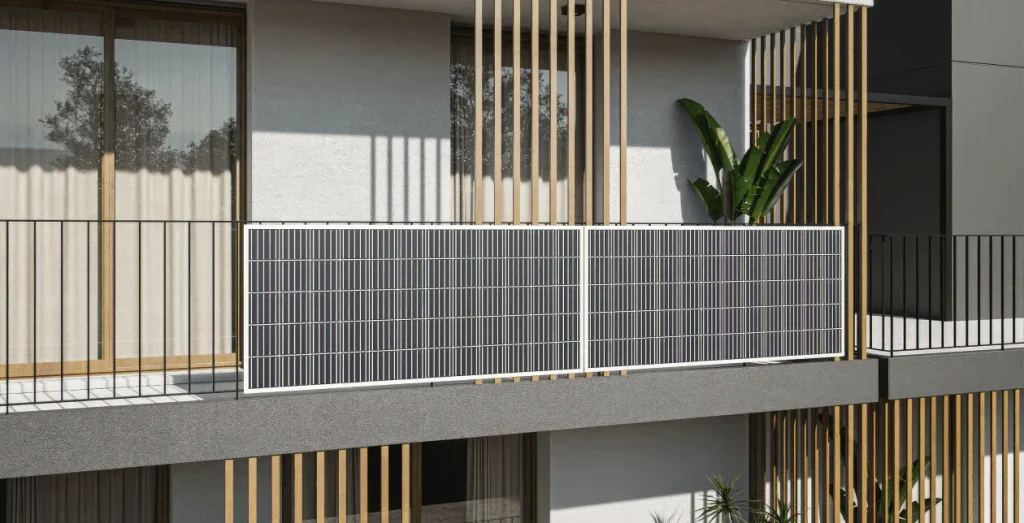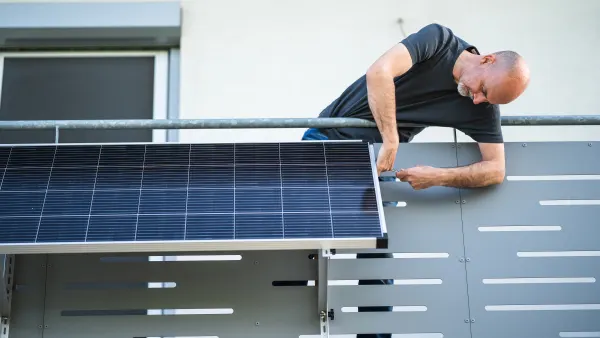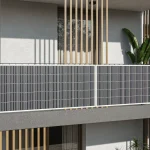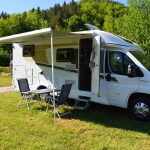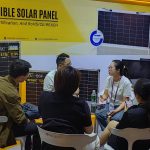Table of Contents
- What Are Plug-In Solar Panels and How Do They Work?
- What Does “Plug-In Solar Panel System” Mean?
- How Much Power Can Plug-In Solar Panels Generate?
- How Much Does a Plug-In Solar Panel System Cost?
- How Do You Install Plug-In Solar Panels?
- What Are the Legal Requirements?
- Top Recommended Plug-In Solar System: Sungold 800W Kit
- Should You Upgrade to an 800W Plug-In Solar System?
- FAQs: Common Questions About Plug-In Solar Panels
- Is 2025 the Year for Plug-In Solar Panels?
Plug-in solar panels are revolutionizing how homeowners join the clean energy movement — no roof, no installer, and no permits needed. Thanks to new regulations in Germany and increasing global adoption, plug-in solar kits — also known as balcony solar systems — can now legally support up to 800 watts of power. But what exactly are they, how do they work, and are they worth it in 2025?
Let’s break it down.
What Are Plug-In Solar Panels and How Do They Work?
Plug-in solar panels are compact, user-friendly solar setups perfect for everyday households. They typically include:
- 1–2 solar modules
- A microinverter to convert DC to AC
- Plug-and-play wiring for standard wall outlets
Unlike traditional rooftop systems, these systems don’t require installers or utility approvals. Mount them on your balcony, plug them in, and start generating power right away.
What Does “Plug-In Solar Panel System” Mean?
The term “plug-in solar device” refers to the same concept as a balcony power plant. Experts, especially those from the Federal Network Agency, use this term to describe small-scale solar systems. Technically, it is not considered a full solar system, but rather a household appliance that generates electricity.
The main differences from large photovoltaic (PV) systems lie in the simplified installation and registration process, as well as in the lower output capacity.
According to the Consumer Advice Center, traditional PV systems installed on or attached to private residences typically cover several square meters and have a peak output of 3 to 20 kilowatts. These systems must be installed and maintained by a professional company, which is also usually responsible for the required technical coordination and registration with the local grid operator.
A plug-in solar panel system is often treated as a household appliance, not a full photovoltaic installation. These systems are:
- DIY-installable with no need for an electrician
- Space-efficient — great for balconies or terraces
- Cost-effective — usually under $1,000
- Compliant with simplified registration in many countries
How Much Power Can Plug-In Solar Panels Generate?
Each panel typically produces 350–470 watts. A dual-panel setup can yield up to 940 watts, though in most places, regulations cap grid feed-in at 800 watts.
| Location | Annual Output (kWh) | Estimated Savings @ $0.35/kWh |
|---|---|---|
| Southern Germany | 550–790 | $192.50 – $276.50 |
| Northern Germany | 450–650 | $157.50 – $227.50 |
Even on cloudy days, these systems can cover standby devices like routers or refrigerators.
How Much Does a Plug-In Solar Panel System Cost?
| Component | Typical Price (USD) |
|---|---|
| 2 Solar Panels | $300 – $600 |
| Microinverter | $150 – $300 |
| Mounts & Cables | $100 – $200 |
| Total | $550 – $1,100 |
These systems often qualify for solar rebates or clean energy incentives.
How Do You Install Plug-In Solar Panels?
Most installations can be completed in under an hour:
- Select a sunny, south-facing spot (balcony, wall, or rooftop)
- Mount the panels using the provided brackets
- Connect them to the microinverter
- Plug the system into a standard outlet
- Register with your local authority if required
What Are the Legal Requirements?
Soon, balcony power plants will officially be allowed to operate with conventional Schuko sockets instead of Wieland sockets, which must be installed by an electrician. By the middle of 2025, product standards are used to regulate this for micro solar systems. In addition, the Consumer Advice Center recommends ensuring that manufacturers comply with the DGS safety standards are maintained. Germany and other markets now support plug-in solar adoption with simplified rules:
- No utility approval needed — just register the system
- Analog meters can still be used temporarily
- Schuko plugs are now legally allowed
- Landlords cannot block solar installations without just cause
Top Recommended Plug-In Solar System: Sungold 800W Kit
Why Choose Sungold Solar?
- 4 PA219 solar panels — Lightweight solar panel
- Microinverter adjustable to 600W or 800W
- Compact design for balconies or walls
- 10+ years warranty and full CE/TUV/ISO certification
- App-based real-time monitoring
Should You Upgrade to an 800W Plug-In Solar System?
If the output of a balcony plant is regularly approaching the 600 watt limit, then an 800 watt inverter may be worthwhile. If the output is already well below that level, then switching to a different panel output and orientation makes little sense – at least without increasing the solar module output.You should consider upgrading if:
- Your current system frequently hits the 600W limit
- You receive strong, direct sunlight throughout the day
- Your daytime electricity usage is significant
Check your microinverter — many brands like Anker, EcoFlow, and Hoymiles support firmware-based upgrades.
FAQs: Common Questions About Plug-In Solar Panels
1. Do plug-in solar panels work on cloudy days?
Yes. They still generate power, just at a reduced rate — perfect for standby loads.
2. Do I need professional installation?
No, but older homes may benefit from a quick inspection by an electrician.
3. How do I track my energy savings?
Use a smart meter, app, or your inverter’s dashboard to monitor usage.
4. Can I install plug-in solar in a rental?
Yes. In many countries, tenants now have the legal right to install balcony solar.
5. Can I sell unused power back to the grid?
No. These systems are designed for self-consumption, not net metering.
Is 2025 the Year for Plug-In Solar Panels?
With utility bills rising and plug-in solar panels easier than ever to set up, 2025 is the perfect time to make the switch. Whether you own or rent, an 800W system can lower your carbon footprint and save on bills — all with zero hassle.


